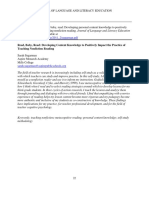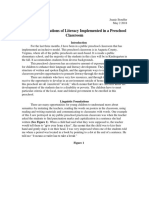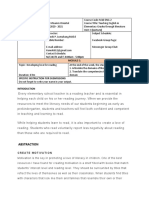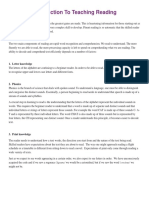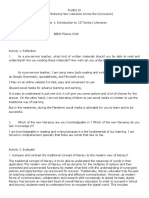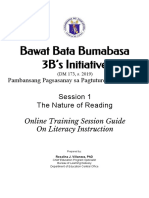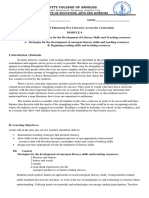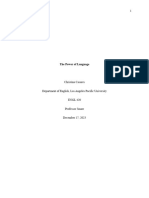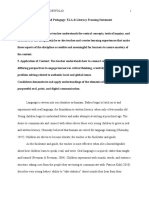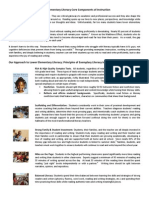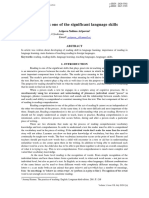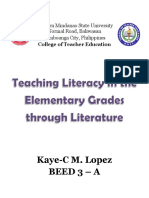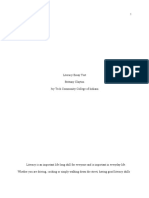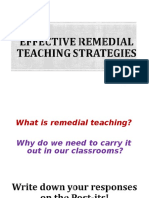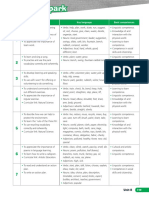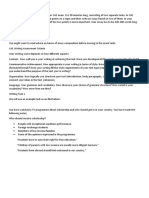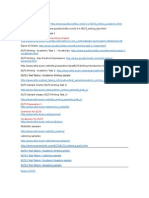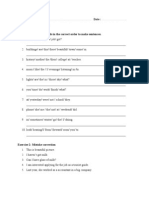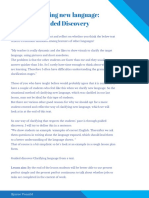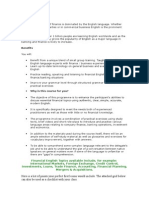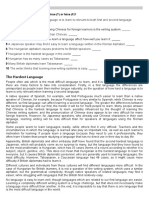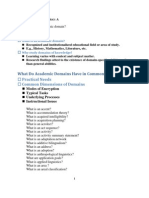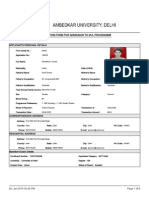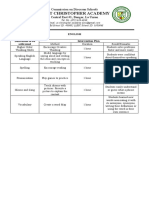0% found this document useful (0 votes)
54 views6 pagesGuyo ExploratoryResearch1
This document discusses reading challenges for elementary students and strategies for teachers. It notes that students need foundations in language, vocabulary, and reasoning to become proficient readers. Teachers face difficulties like parental indifference and lack of interest that require patience. Effective teaching strategies include teaching phonics, whole language, and whole words. The document also provides examples of activities to improve reading comprehension like reading partners, visualizing passages, reading aloud, and comprehension quizzes. As future educators, teachers must be flexible and embrace diversity to help students learn in different ways.
Uploaded by
Rachelle Ann TimoganCopyright
© © All Rights Reserved
We take content rights seriously. If you suspect this is your content, claim it here.
Available Formats
Download as DOCX, PDF, TXT or read online on Scribd
0% found this document useful (0 votes)
54 views6 pagesGuyo ExploratoryResearch1
This document discusses reading challenges for elementary students and strategies for teachers. It notes that students need foundations in language, vocabulary, and reasoning to become proficient readers. Teachers face difficulties like parental indifference and lack of interest that require patience. Effective teaching strategies include teaching phonics, whole language, and whole words. The document also provides examples of activities to improve reading comprehension like reading partners, visualizing passages, reading aloud, and comprehension quizzes. As future educators, teachers must be flexible and embrace diversity to help students learn in different ways.
Uploaded by
Rachelle Ann TimoganCopyright
© © All Rights Reserved
We take content rights seriously. If you suspect this is your content, claim it here.
Available Formats
Download as DOCX, PDF, TXT or read online on Scribd
/ 6








